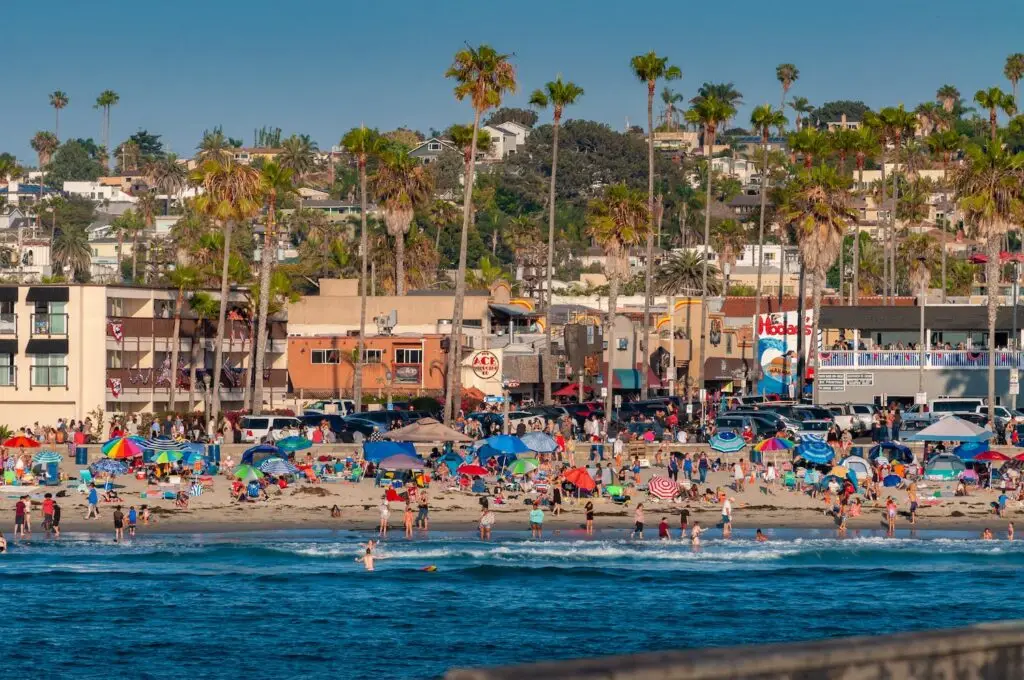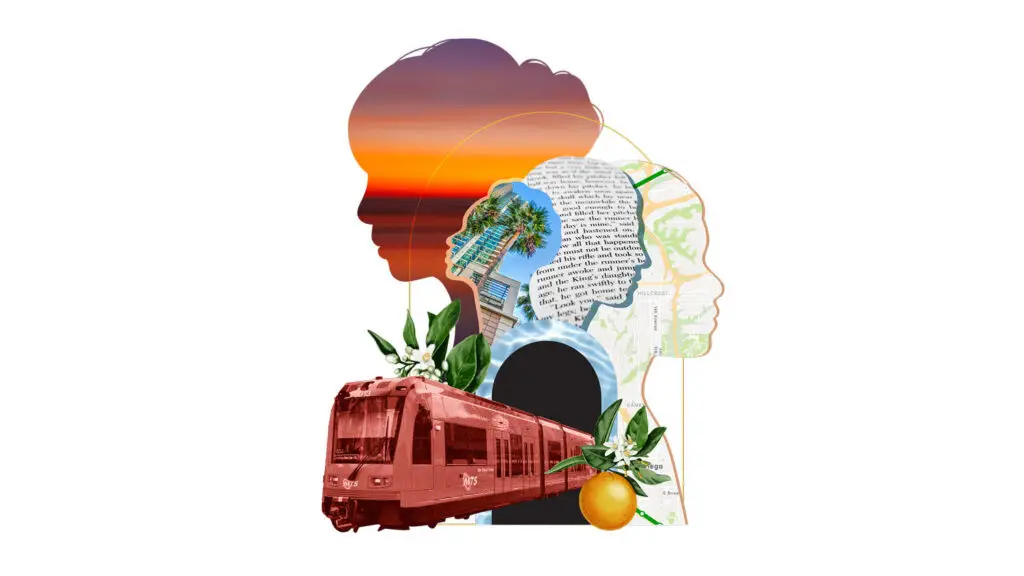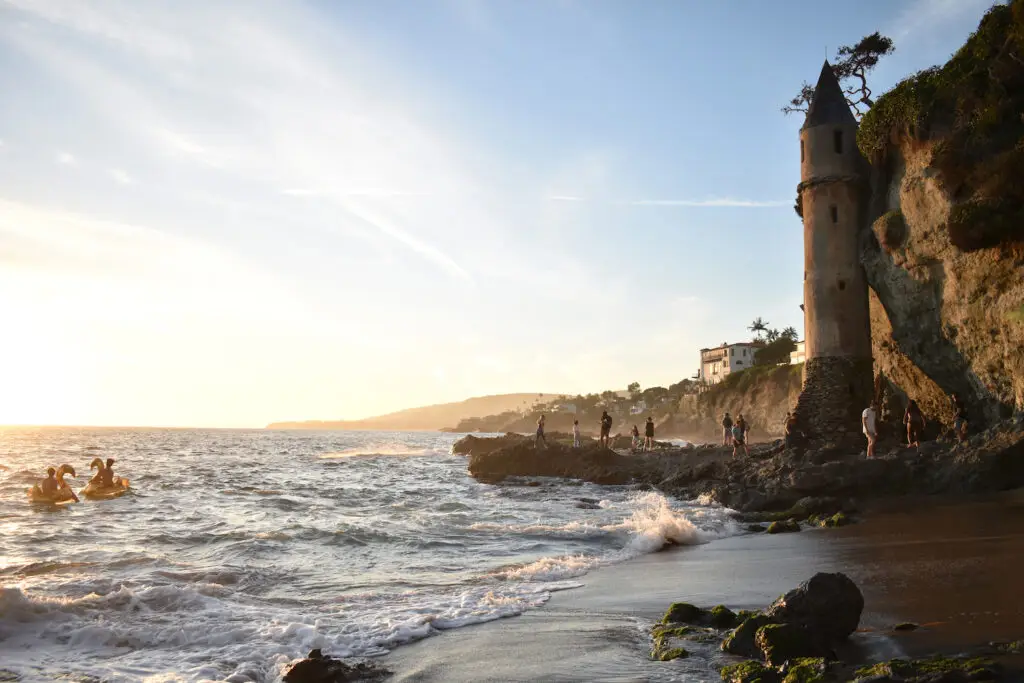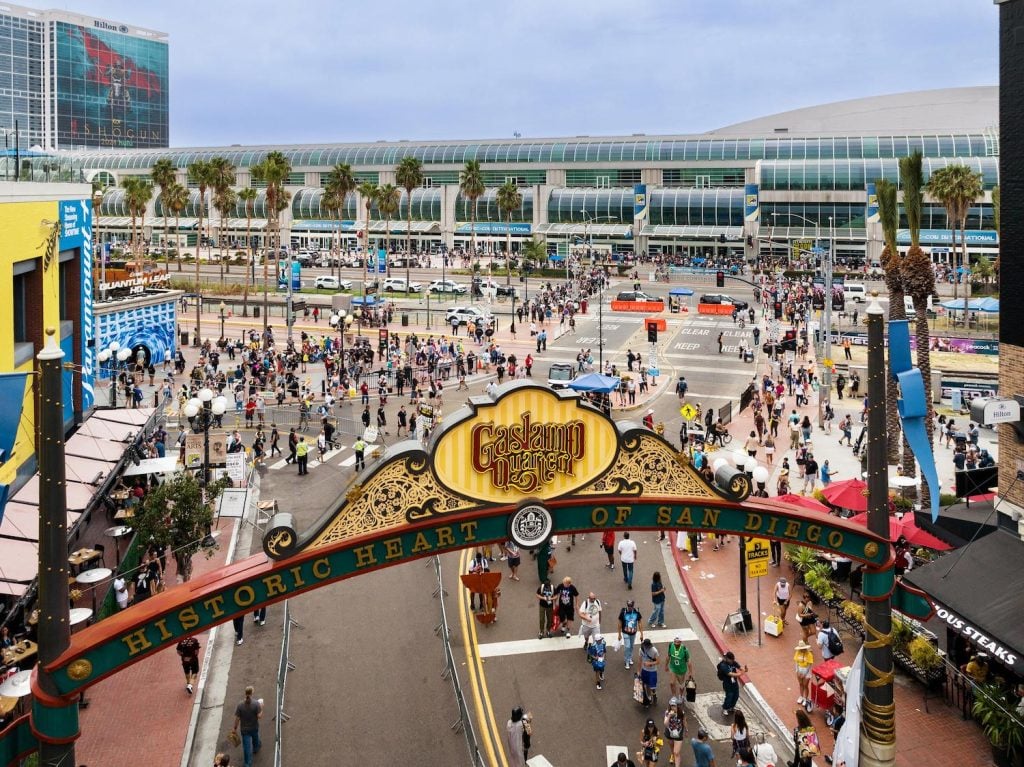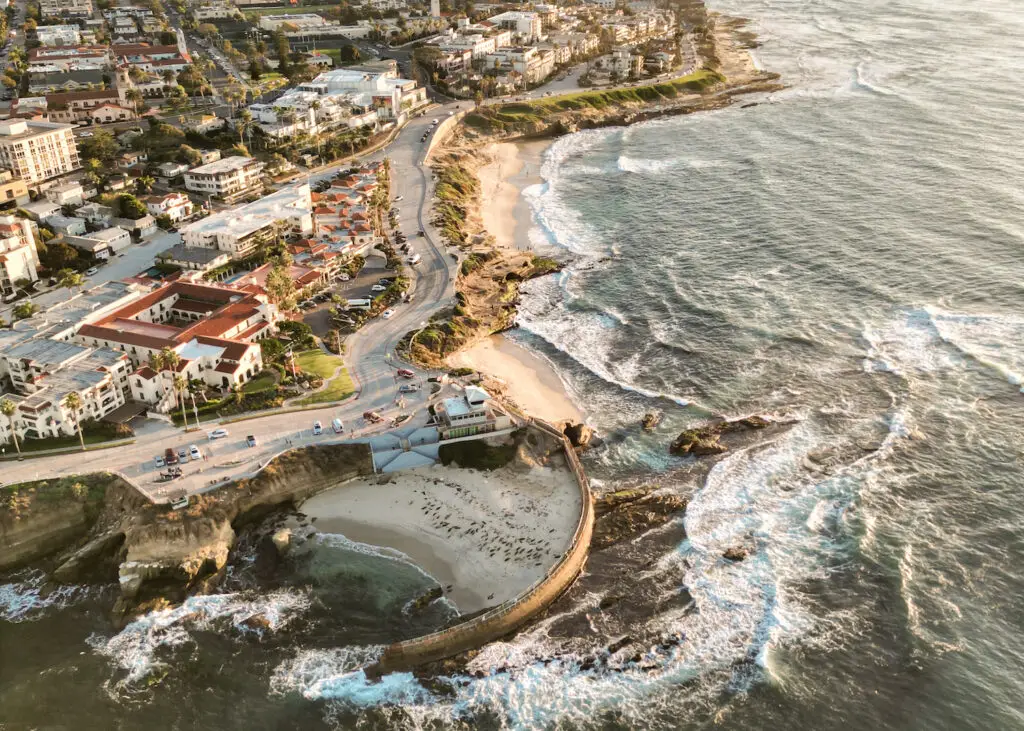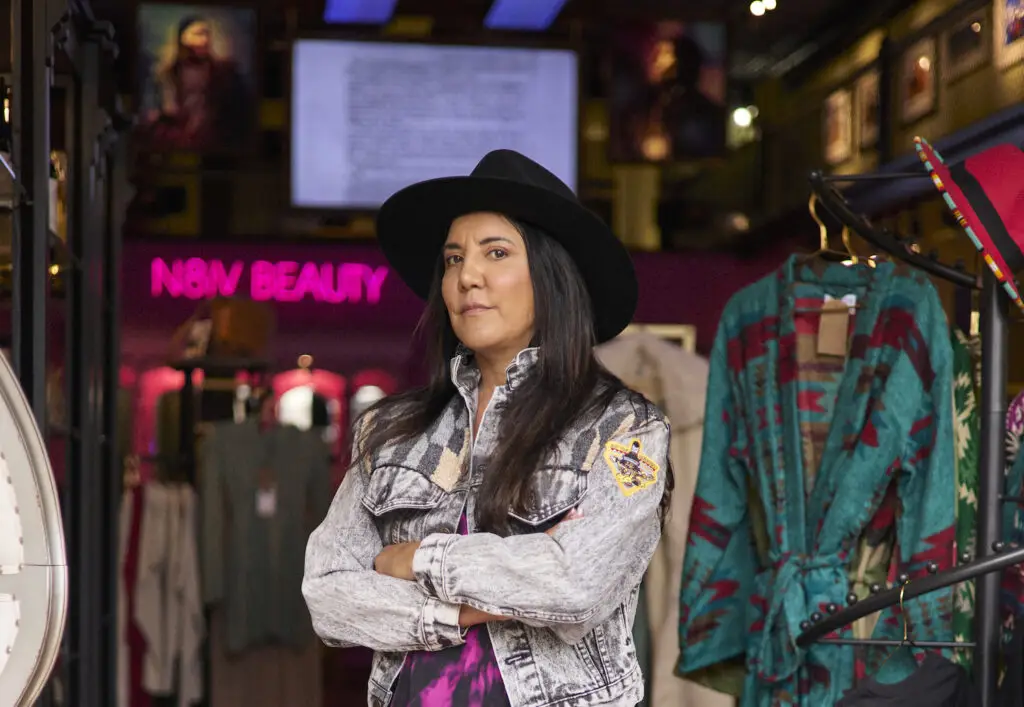Although humans are long gone now, the fossil record can give us hints about them—and even more ancient life forms. But where exactly was “San Diego”? It depends. If you have any maps over 50 million years old, throw them out.
Just as the first dinosaurs were evolving in the Triassic period, the world’s one supercontinent started breaking up, and future North America drifted west. The oldest rock in this area is from the Jurassic: seabed with tiny ammonite fossils formed the Cuyamaca Mountains.
What created those mountains? The brand-new coastline that collided with the continent in the middle Cretaceous period. Southern California and Western Mexico began as a fresh volcanic arc offshore, a pushy neighbor from the next tectonic plate over.
The world’s last dinosaurs enjoyed this new coast for a good 40 million years. The pompadour-crested herbivore Lambeosaurus lived here, as did a smaller tyrannosaur, the nine-meter Albertosaurus. One species, the stout, armored Aletopelta coombsi, is found only here—nicknamed the Carlsbad Ankylosaurus after where it was discovered.
The Cretaceous gave way to the Paleogene, the dinosaurs to mammals and birds. For 64 million years, woolly rhinos, giant armadillos, titanic bears, and over a dozen species of ancestral horse roamed this land. In the next period, the Neogene, a new peninsula ripped away from the West Coast to become Baja California.
Soon enough, one species of intelligent hominid eclipsed its great ape cousins in the Quaternary period and spread to every continent. The oldest evidence of human presence in North America was found in San Diego: the “Cerutti Mastodon”, whose bones were unmistakably processed by hand tools. And in the blink of an eye—just 10,000 years, or less than one percent of one percent of the time dinosaurs lived—humans went from isolated hunter-gatherers to a global technological society.
Then, just as fast as they appeared, they vanished. 250 million years later, there’s little sign they were ever here. Most everything they left behind has eroded, drowned, or ground to dust beneath the returning glaciers; their entire history a millimeter of iron-rich soil, sprinkled with radioactive isotopes, midway down a canyon wall.
Miraculously, we’ve found a few exceptions here: fragments of bronze deep underground that, holoforensics shows, were once statues. This durable metal provides our only tangible image of the humans who lived in San Diego.
Where a library once stood, an author reclines beside one of his characters: “Dr. Seuss and The Cat in the Hat.” Amid a concentration of plant species not native to the continent stands “Kate Sessions, Scientist, Horticulturist, Nurserywoman, ‘Mother of Balboa Park.’” And in the ancient urban center, an athlete named Tony Gwynn is inscribed, “If you work hard good things will happen.”
On a geological timescale, border lines and coastlines are equally fleeting. The ocean this city looked upon closed up as the continents joined together again. The land that held the city of Shanghai, once separated from San Diego by 10,000 kilometers of ocean, is now just beyond that mountain ridge. Likewise, an international boundary once ran to the south, but no evidence of it remains. In its place, a vision of unbroken green stretches far away.
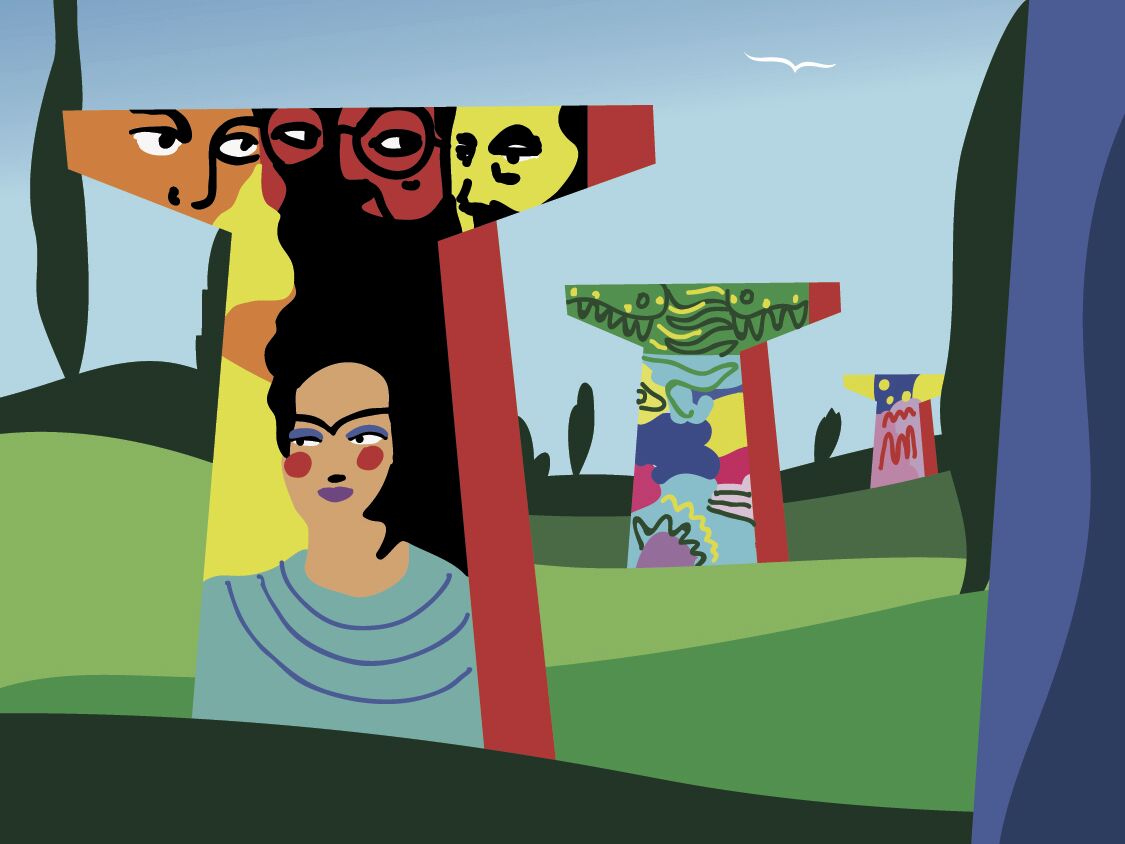
An artist’s rendition of the monument Chicano Park, as it might have stood during the Age of Humans.
PARTNER CONTENT
Illustration by Verónica Gretch



